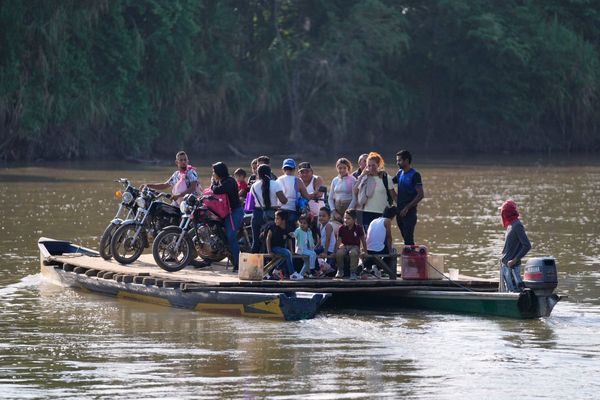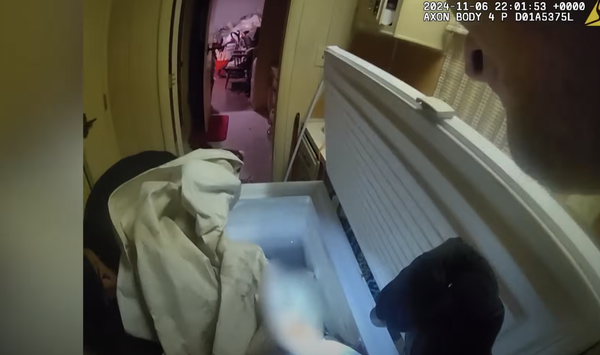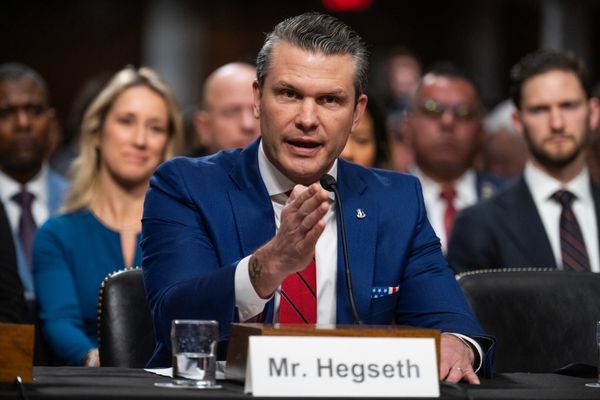
There are an awful lot of tombstones in my neighborhood lately. They bear names like "Noah Scape" and "Izzy Dead." They pop up regularly this time of year, and disappear again in November. And with each passing Halloween, they less resemble some familiar authentic counterpart as they do a vestige of a bygone tradition.
Here in the U.S., fewer and fewer of us are choosing to spend our afterlife six feet under. Since 2015, cremation has surpassed traditional burial as the preferred choice for our remains, and the National Funeral Directors Association (NFDA) estimates that by 2035, a stunning 80% of us will be opting for cremation.
A big driving factor, of course, is cost — caskets are expensive, cemetery plots are expensive and graveside maintenance is expensive. In my state, New York, funeral and burial fees can run between $8,000 and $12,000. And that's just the basics. Jack Mitchell, president of the National Funeral Directors Association, talked to Marketplace earlier this year about the “man hours to prepare for a viewing with embalming and dressing and cosmetics, and then to have staff there to oversee when a visitation was going on.”
Another factor is the peripatetic nature of modern life. "It’s a very transient world we live in today," Mike Nicodemus, the vice president of cremation services for the NFDA told CNN back in 2020. My in-laws rest side by side in a leafy plot not far from the home they used to share. But for many of us, a final resting place presupposes that one has had a final living place. And given that the average American moves around eleven times in a lifetime, where we end up is likely far from where we started.
Then there's the unignorable limitation of space. In the U.K., a quarter of town council-owned cemeteries will likely be at capacity within the next decade. In America, urban centers are already facing a similar shortage of spaces, with historic cemeteries like Green-Wood and Arlington nearing capacity. (You thought it was hard finding a place to live in the city? Try finding one when you're dead.) My mother's ashes are tucked in a corner of a Catholic cemetery and mausoleum one state over. Her parents and deceased siblings are buried in an entirely different area — there was no room left for her there by the time she died.
But while cremation is an increasingly popular and seemingly more environmentally friendly choice — especially if you opt for a biodegradable container — there are downsides. Marc Bisson, managing director at Catholic Cemeteries in Canada, says, "Both traditional burials and cremation have pros and cons when it comes to the environment. While cremation avoids leaving large coffins and remains in the ground, which can be potentially harmful, it still emits large amounts of pollutants and utilizes fossil fuels to power the furnace."
Bisson notes an increasing number of alternatives for what to do with one's body once it's shuffled off the mortal coil. "Some new processes are emerging as potentially more sustainable options for cremation, including liquid cremation or aquamation," he says, explaining the process. "Through using alkaline hydrolysis, organic body compounds can be dissolved, leaving only bone, which can then be cremated to ash for your urn. The hydrolysis liquid is safe for water disposal, and this process helps limit the use of traditional cremation incinerators."
He adds that for those who want a more traditional experience but with a sustainable twist, there are still more choices. "Different elements go into a green burial," he says, "including a biodegradable casket and tombstone, a natural fiber shroud, a shallow grave to accelerate biodegradation, and opting for overall smaller headstones. Additionally, if you are being kept in a casket over burying cremated remains, you can choose not to use chemical embalming, which helps to avoid polluting the ground when decomposition takes place."
But so-called green burials come with their own set of drawbacks. While the process is legal, the industry around it remains largely unregulated. Earlier this month, "at least" 189 decaying bodies were discovered in a Colorado funeral home called Return to Nature. The business had offered cremation services and "green" burials without the use of embalming fluids. The company had suffered recent business losses and had been operating with an expired license. It is expected to take several weeks to identify the decedents.
One of the more intriguing new developments in remains management is the so-called mushroom suit. Over a decade ago, artist and inventor Jae Rhim Lee created a stir — and a viral TED Talk — with her proposal for an "Infinity Burial System," a spores-laden shroud that essentially composts the body. Luke Perry chose this plan before his death in 2019, though there are questions regarding its effectiveness.
And for those who prefer the water to the woods, sea burials are another option, though the Environmental Protection Agency keeps an understandably tight rein on exactly what parts of the country they can occur, and how far out the body must be released.
My friend Fawn Fitter has written about her plans for a sustainable afterlife at the University of Tennessee in Knoxville Forensic Anthropology Center. At the "Body Farm," students learn how to extract critical information from decomposing bodies for identification and criminal investigations. "What I really want," she wrote at the time, "is to be as useful as possible for as long as possible."
My own hope is to follow a similar purposeful intention. Several years ago, I visited my doctor in the lab where he'd worked for years developing cancer immunotherapies. A former patient had arrived that morning, this time in a zippered bag, to make one final contribution to research. As a fellow long-term clinical trial patient, I can't imagine a more fitting place for me to wind up eventually, too.
For a host of practical reasons, the cemetery appears to be a dying proposition. But as evidenced by a multitude of atmospheric seasonal decorations, there is still nothing quite like a graveyard for drama. After all, there aren't too many great cinematic scenes involving urns — and even fewer that aren't comedic. A solemn gathering in front of a headstone, in contrast, has the weight of significance. But that may be less about any literal dead body in the ground than it is about our human need for memorial.
"As perspectives in our society continue to evolve, many traditional burial practices are being reimagined," says Elreacy Dock, a Las Vegas thanatologist and death educator. Historically, cemeteries have served as a place of remembrance and reflection. Many of the 19th-century cemeteries were intended to be spaces for peaceful recreation and lingering during visitations of loved ones, so these locations showcased lush landscapes that featured willow trees, flowerbeds and lakes."
She notes that "Although this approach to cemetery design is less popular in the 21st century," there are still ways of incorporating tradition into modern death rituals. "It would be most comparable to conservation and green burial cemeteries," she says, "which emphasize maintaining natural landscapes without disrupting the environment or surrounding habitats." She speculates, "The future of death beyond burial may shift to digital memorials, virtual tributes and interactive platforms that enable bereaved individuals to honor their loved ones without the limits of physical space."
We think of death as an event. It's not. It's a process, one that continues long after the last mourner leaves the funeral. We break down, we burn or liquefy, we become part of the earth or the air or the water. And understanding and making choices about what becomes of our corporeal remnants matters, not for us but for those who loved us and for the planet we were briefly alive on. "The way we choose to memorialize our loved ones will also significantly change over time," says Dock. "However, what will not change is the essence of remembrance."







